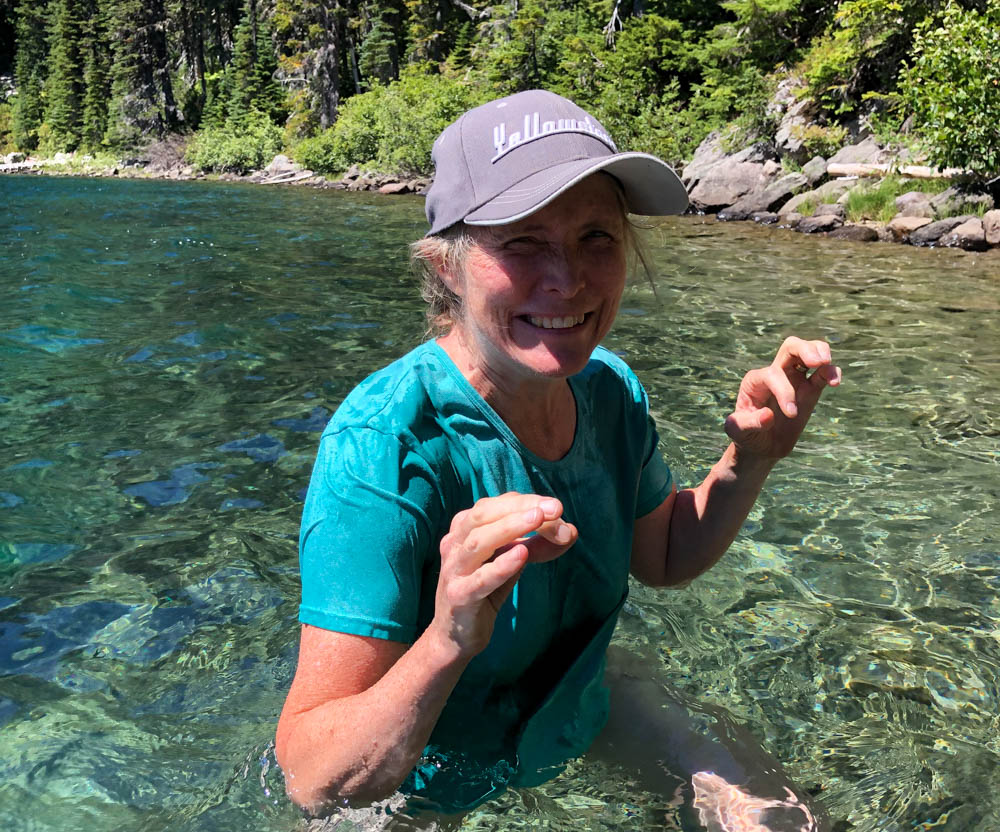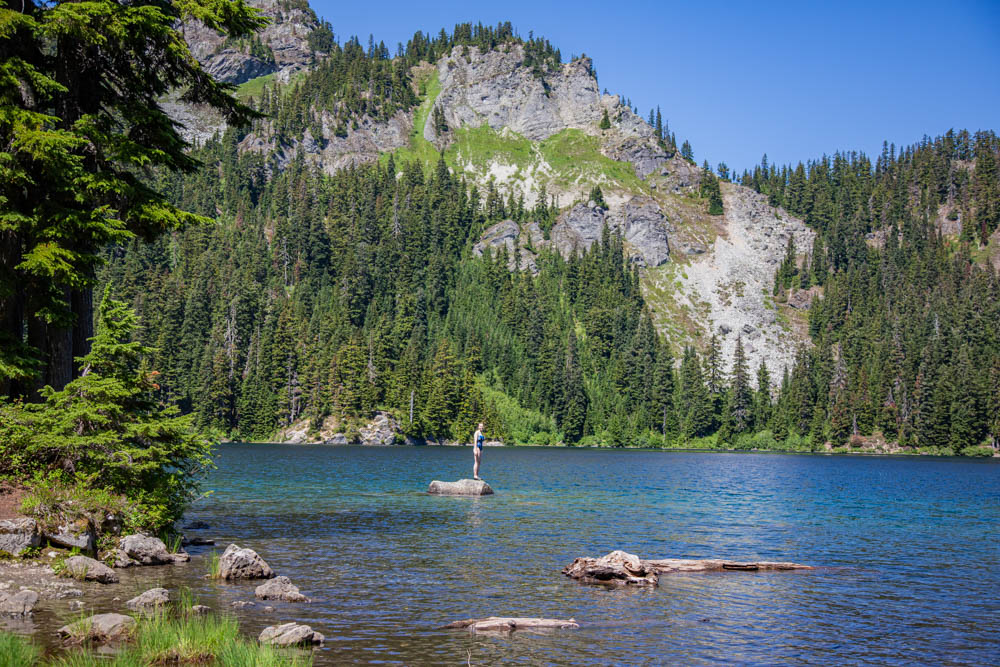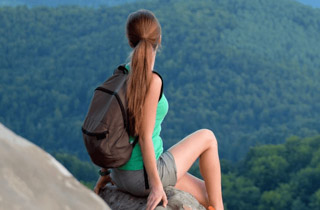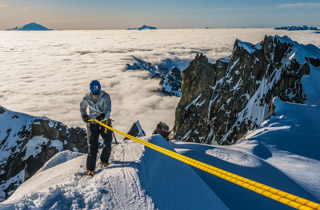Prepare for a Summer of Lake Bagging
Prepare for a Summer of Lake Bagging
In the Mountaineers, a volunteer-run organization based in Seattle, you can earn badges for “peak bagging.” This spring a woman wrote a piece for the Mountaineers Magazine on “lake bagging.” It made sense to supplement her piece with a training article on preparing for a summer of lake bagging.
I love visiting alpine lakes in any season. Last summer, I waded in Olallie Lake’s frigid waters, and in the winter I got to enjoy a snowy walk across its frozen surface with my daughter. Alpine lakes offer a refreshing respite during steamy summer adventures, but they can be a trek to reach. Here are some tips and tricks on how to prepare for any summer adventure that might include lake bagging so you can take the plunge with ease.


Physical training needs
Getting to most alpine lakes, especially remote ones, may involve significant elevation gain and mileage. You’ll need to practice gradually increasing your pack carrying capacity the longer and more involved your trips will be. That means including cardiovascular and strength training that works the large muscles in your core and legs. And if you plan to not only reach the lakes but also swim in them, include training for the upper body as well.
Accessing lakes often means encountering uneven terrain. Prepare your legs with squats, step-ups, and deadlifts so you have the leg drive to get over downed logs and boulders. Include planks, oblique twists, and other core work to help with pack carrying. If you do any bushwacking, expect the trail to be rocky and unforgiving. Incorporating balance and flexibility training will improve your overall stability and help prevent slips and falls as you navigate over and under downed branches.
Training Suggestions
If you’ve never gone into an alpine lake, know that they are COLD, even in the middle of the summer. In anticipation, try swimming in a local lake not too far from home (like Lake Washington in Seattle) before venturing to the mountains. If you plan to swim across a lake, be aware of your physical limits and include swimming at least once or twice a week in your training program. If you can’t find a suitable exit, you may have to swim back, which means doubling the distance.
To train to get there, begin with shorter hikes with a light pack, and gradually add distance, elevation gain, and pack weight – not more than 10% per week – to prepare for the lakes you’d like to visit. Keep in mind that the longer you have to hike to get to a lake, the more water, snacks, and safety equipment – in other words, weight – you’ll likely carry.
Before any big hike or swim, include a short taper — the last thing you want to do is be overly tired from a hard strength workout the day before a trip so that you can’t enjoy it.
Anticipated Difficulties
Unlike well-trodden paths to popular peaks, the routes to secluded lakes may not be well-marked. Know how to use a map and compass. Practice orienteering in familiar surroundings before you must rely on them in the wild. Update your route-finding skills if you anticipate GPS won’t work wherever you are headed.
The terrain on the way to lakes can vary from rocky paths to gravel slopes to muddy, rush-filled edges. Bring a pair of lake shoes to protect your feet from murky mud, brambles, and unseen snags so you don’t injure your feet getting in and out of the water.
While your goal may be to swim in cool, sun-dappled, emerald-green water on a hot day, expect rapid change in weather, especially in the mountains. Bring appropriate warm clothing and gear so that you won’t experience hypothermia if the weather catches you off guard.
And if you do hike on a hot day, remember the tolerances of those in your party. Dogs don’t do well in extreme heat. Take adequate sun protection and plenty of water.
Finally, remember that lakes are sources of habitat and water for wildlife. You are a visitor in their home. Research what wildlife you might encounter so you can stay alert and prepared.
With the proper preparation, you can make lake bagging a memorable and rewarding experience. Think ahead of what your end goal will be – distance, elevation gain, time in the water – and build your training program accordingly. Then, get out and take a swim!

Photos include the author in Rachel Lake and Snow Lake, and her daughter about to jump into Mirror Lake in Western Washington.






